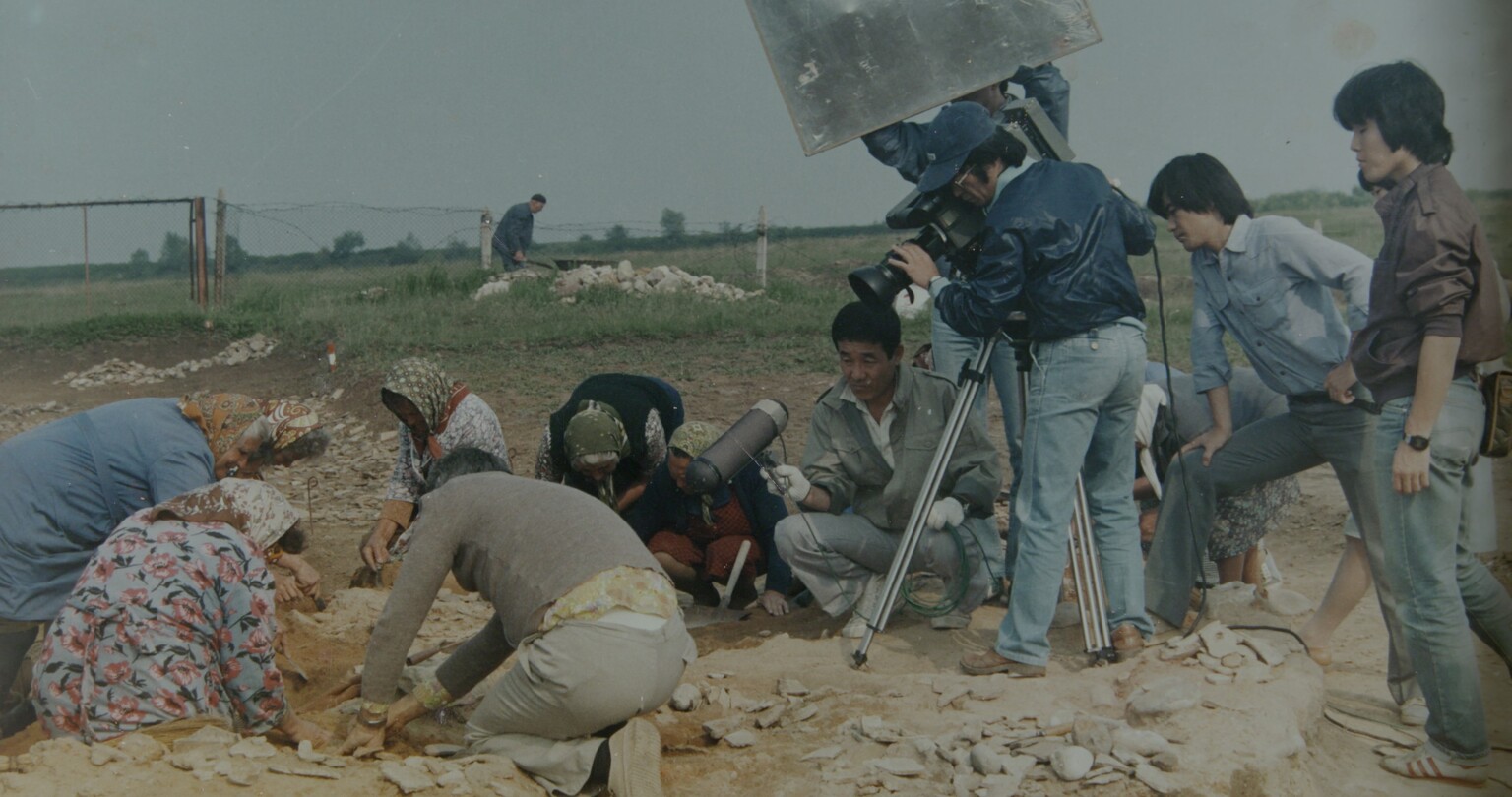Screening

Jan Peter Hammer: The Dig
As part of Jan Peter Hammer’s research project as a fellow at The Academy of Fine Art, the new film The Dig, about stolen artefacts and their journeys from archaeological sites to renowned auction houses, will be screened at KHiO.
Program
Time: Monday, September 25, 18.00 – 20.00
One screening followed by a conversation between the artist, Associate Professor Rike Frank and Professor Maria Lind.
Time: Tuesday, September 26, 09:00 to 13:00
Screening, the film lasts 26 min and will be looped
Time: Friday September 29, 09:00 to 16:00
Screening, the film lasts 26 min and will be looped
Hammer was accepted as a fellow in 2016 with “The Art of War”, a research project which revolves around the illegal trade in stolen antiquities. In The Dig this trade is depicted as an epiphenomenon of a new global order, emerging in the margins of the nation state. By tracking stolen artefacts and their journeys from archaeological sites or provincial museums to international free ports and renowned auction houses, “The Art of War” attempts to map the entanglements of underground economies, digital platforms, clandestine insurgency, and transnational finance.
About The Art of War
In 1977, Bulgarian archaeologist Vetsislav Gergov discovered a 6500-year-old Early Bronze Age settlement in Telish, district of Pleven. The Telish archaeological site contained forty-one unique clay figures of aeneolithic deities, hundreds of pieces of glazed pottery, manifold tools made from stone and copper, and a small cylindrical object, whose function is unknown. Gergov told the artist he believes it represents an alien spaceship, but it reminded Hammer of a sculpture by Brancusi.
Since Paleolithic times, the area corresponding to present-day Bulgaria has been continuously inhabited, and, at times, densely populated. Due to the wealth of archaeological artefacts, “treasure hunting” is a popular activity. The fall of the Soviet Union ushered in an era of deindustrialization and staggering unemployment rates. The simultaneous availability of affordable metal detectors and easy access to the Western auction house market—with its endless appetite for antiques—turned archaeological looting into one of the few potential sources of independent income. The resulting blight has remained widely unnoticed in the European Union, of which Bulgaria is a part, though its scope is considered by some to be on par with the much more publicized destruction carried out by the Taliban or the IS.
With its mounds peppered with recently dug holes, amidst the ruins of Soviet-era steel plants, vacant factories, and a deserted military spaceport, twenty-first century Bulgaria inhabits a strange temporality, its history undone. These sites, which once signified progress, feel so alien to the reality of an economy that has devolved into barter and scrapping that one would think they were built by another species—much in the same way that images of Yugoslav World War II memorials, called spomeniks, circulate online as purported evidence of alien presence on Earth.
How did utopia become so alien? Why does the future look like the distant past? Why was Primitivism so appealing to Modernism?
In his 1908 Bolshevik sci-fi, Red Star, Alexander Bogdanov fictionalizes the visit of a superior civilization, classless and egalitarian. His Martians are communists, but so are most alien societies depicted in science fiction novels, be it by capitalist or socialist authors. This is the case, the artist believes, because the future is either communist or it's no future at all—just a protracted or magnified present, which drags on, plagued by power differentials, exploitation, and militarism. Past artefacts look modern, futuristic, alien even, because our anaemic imagination can no longer fathom collective history, nor that the present might be undone.
Jan Peter Hammer used a wide range of research methods in the process of developing this project, and his approach varies by the sources of information that are drawn on. On the one hand the artist employs documentary methods to identify and categorize physical sources (documents, archives, interviewees); on the other, he attempts to interpret and conceptualize the world that these objects engender. In the case of The Dig, his research question is not simply: how is the black-market trade run? It is also, what happens when labour has no collective voice? Or how to describe the entrepreneurial subject who sees gaming the system as freedom?
Jan Peter Hammer has been artistic research fellow at the National Academy of the Arts Oslo since 2016. Exhibitions / festivals (selection): THE BEAST AND THE SOVEREIGN, MACBA, Barcelona & Württembergischer Kunstverein, Stuttgart (2015); Istanbul Biennial (2015); Toys Redux – On Play and Critique, Migros Museum für Gegenwartskunst, Zurich (2015); Athens Biennale (2013); Bergen Assembly (2013); Docaviv – Documentary Film Festival, Tel Aviv (2012); IFFR – 40th International Film Festival Rotterdam (2011); Without Reality There Is No Utopia, CAAC – Centro Andaluz de Arte Contemporaneo, Sevilla (2011).